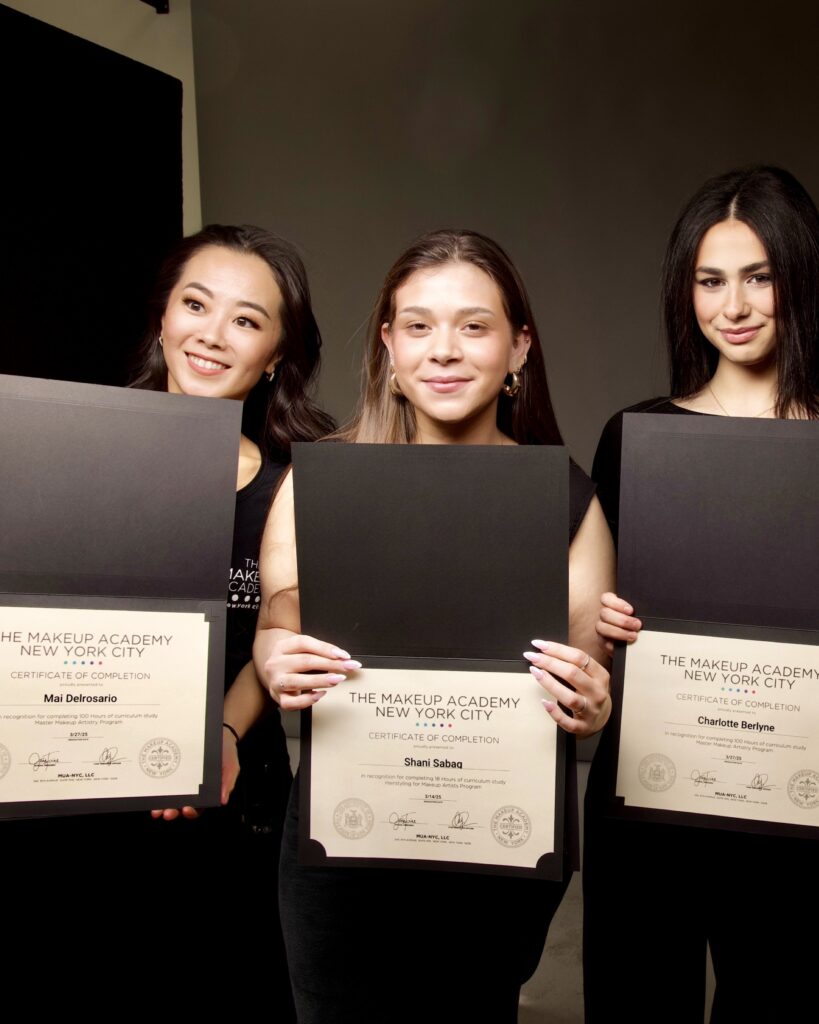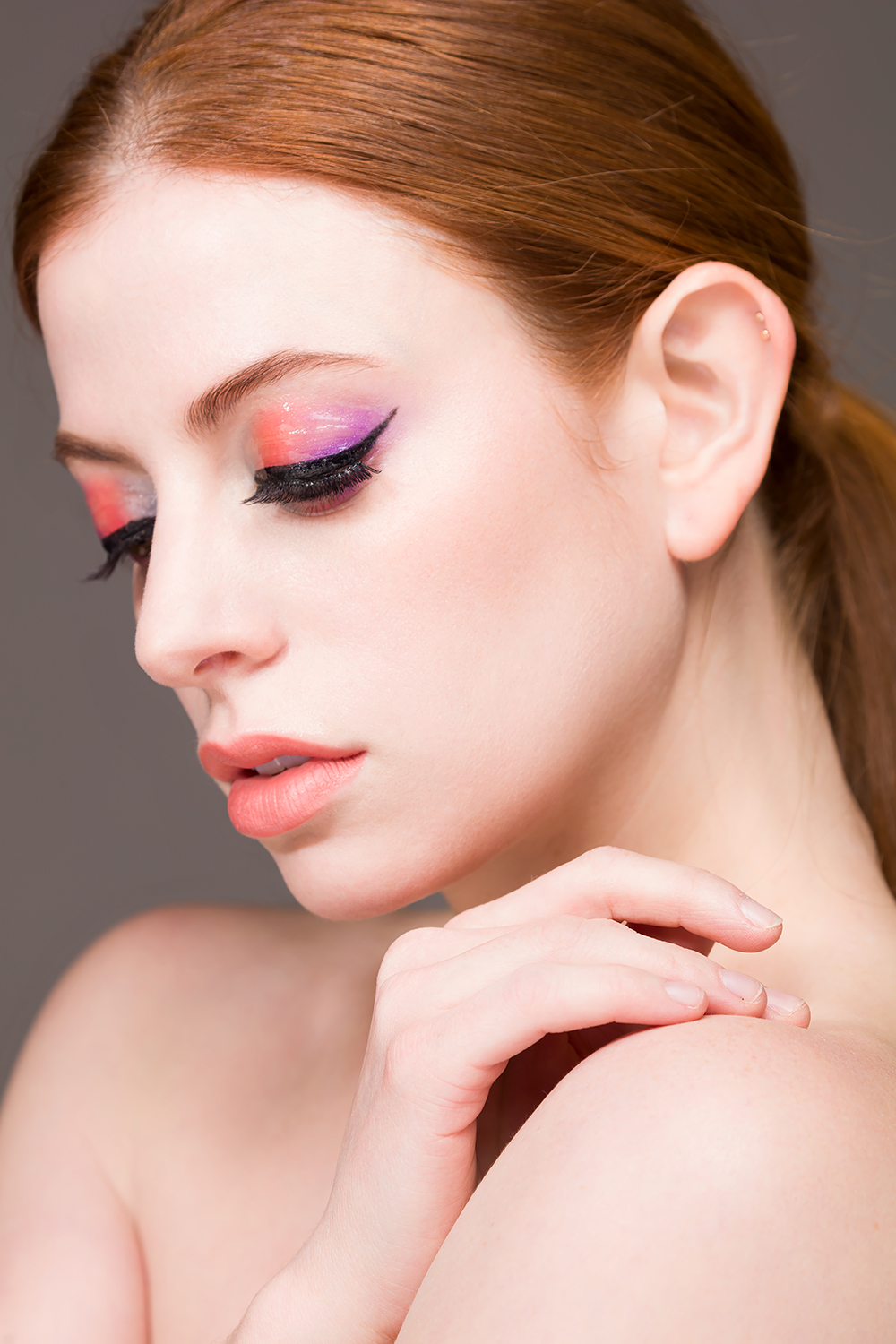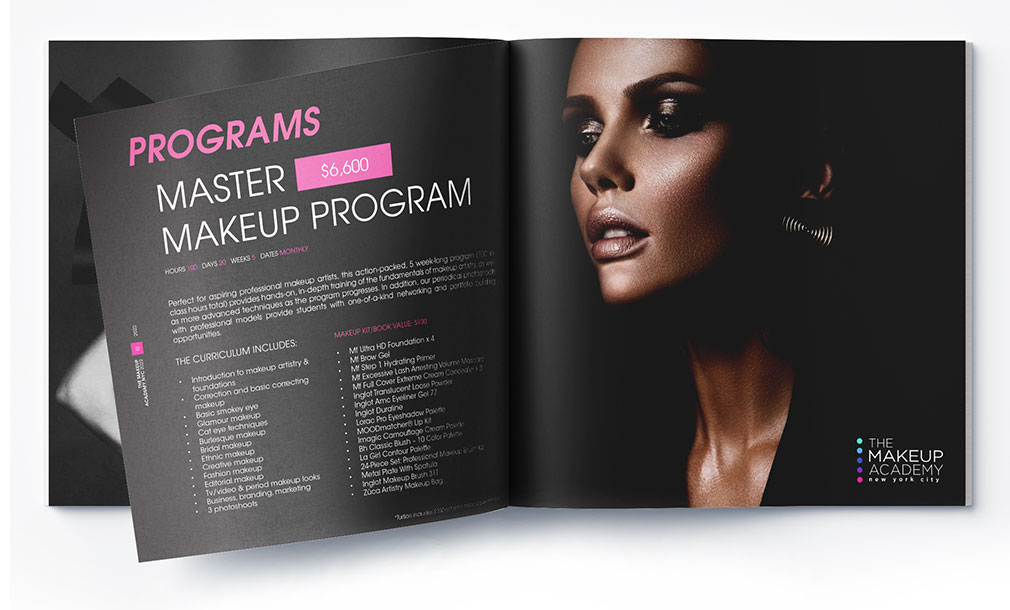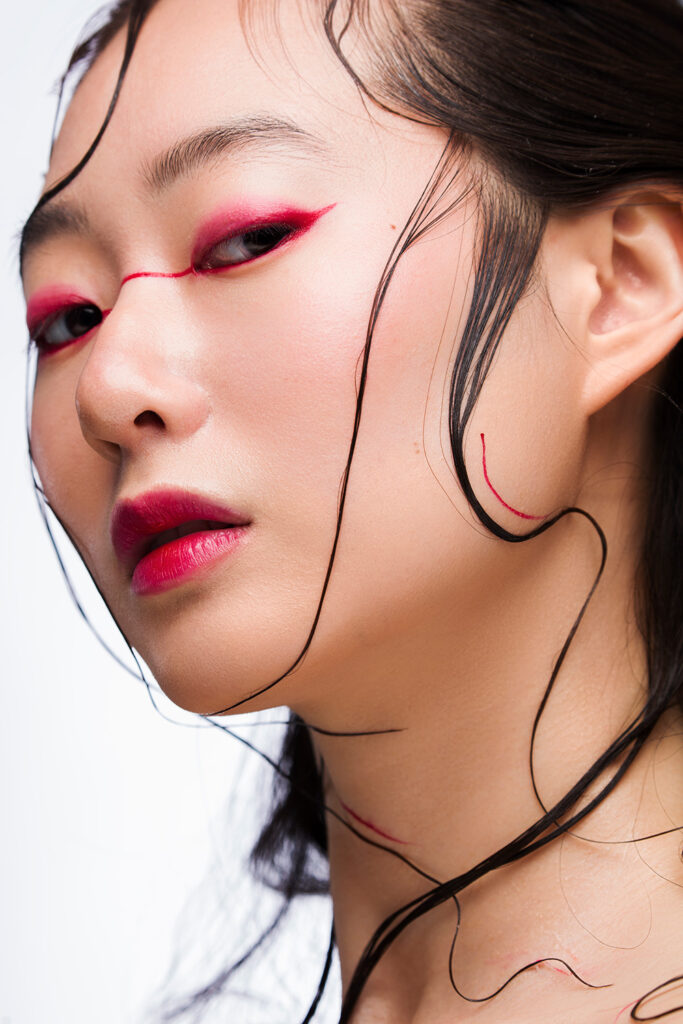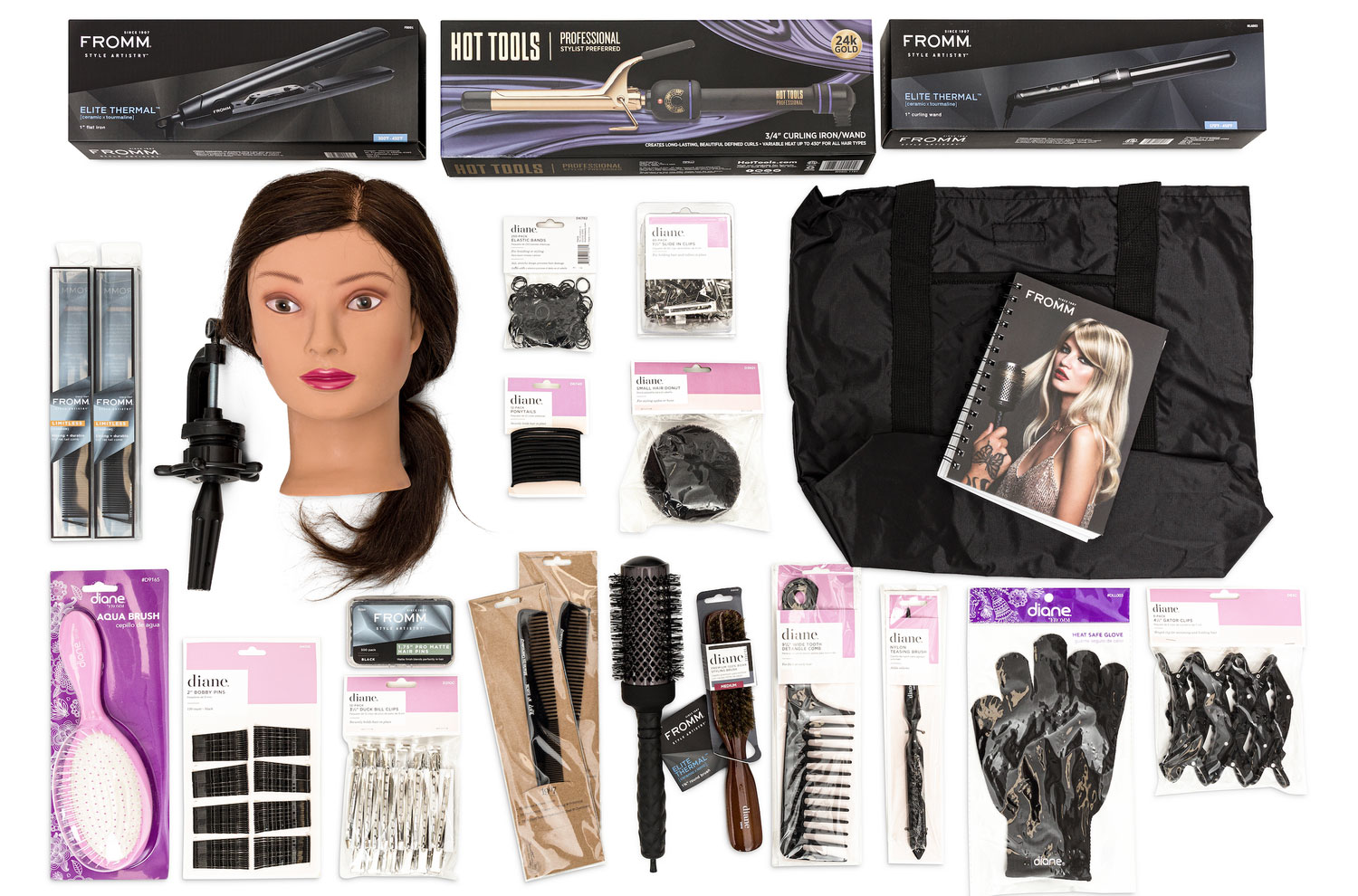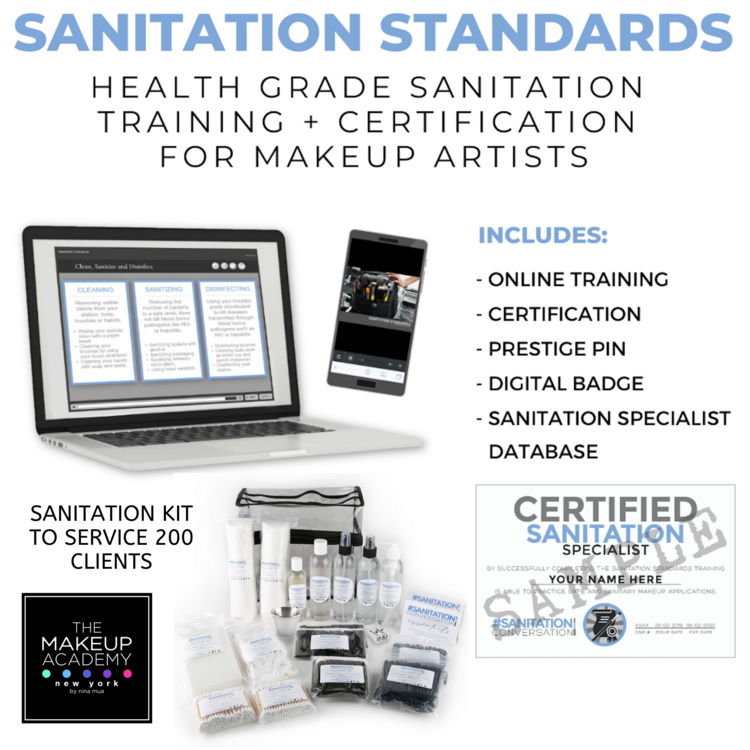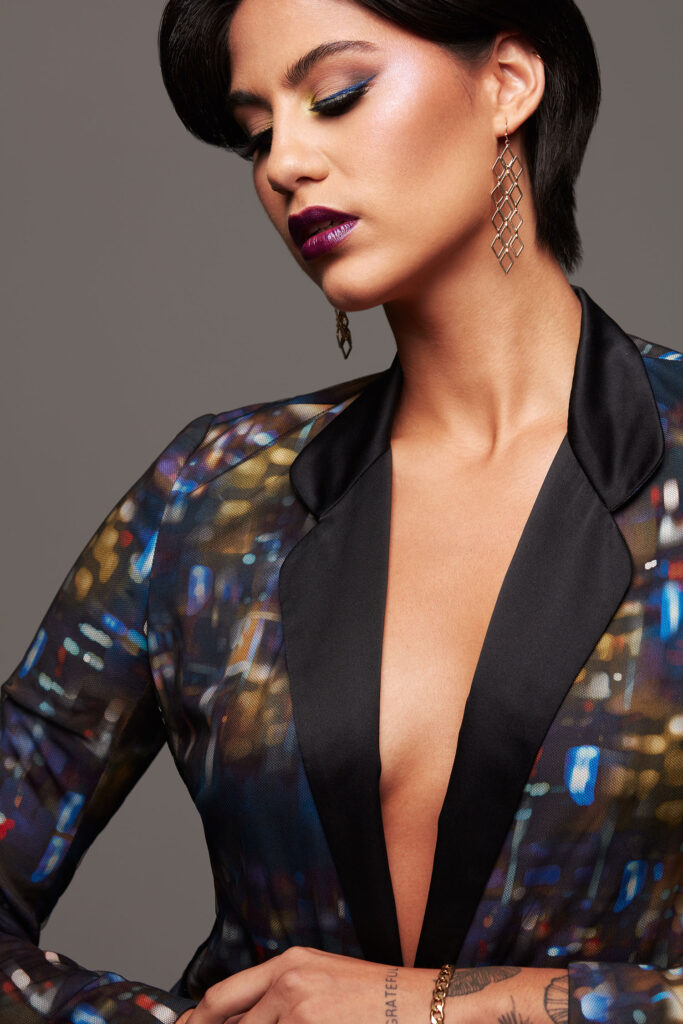Essential Steps to Develop a Makeup Portfolio in School
The journey to becoming a professional makeup artist requires more than creativity and technical skills—it demands a well-curated portfolio that showcases talent, versatility, and attention to detail. Aspiring MUAs at makeup academies and beauty schools, such as The Makeup Academy NYC, know that a compelling portfolio is key to landing opportunities like New York Fashion Week or roles with top brands such as Charlotte Tilbury. This guide outlines essential steps for developing a standout portfolio during school by defining your target audience, selecting diverse makeup genres, capturing high-quality photos, recruiting models, creating an engaging online presence, and promoting your work effectively.
Define Your Target Audience for Your Makeup Portfolio
Defining your target audience is crucial in creating a portfolio that resonates with potential clients and employers. Knowing who will view your work helps ensure your visual narrative and style meet their expectations. Your audience may include those interested in editorial work, bridal makeup, professional photoshoots, or runway looks seen at events like New York Fashion Week.
Identify the Demographics That Suit Your Makeup Style
Analyze age, gender, income, and lifestyle to determine who appreciates your aesthetic. For example, bold, high-fashion looks may attract younger, trend-savvy clients inspired by brands like Charlotte Tilbury, while natural, subtle techniques may appeal to professionals seeking everyday beauty enhancement. Using social media trends and consumer insights, tailor your portfolio to reflect these preferences.
Analyze Current Trends That Appeal to Your Audience
Incorporate contemporary trends influenced by cultural events and seasonal changes. For instance, if bright, creative colors are popular, showcase makeup looks that highlight these hues. Adding before-and-after photos, client testimonials, and examples of event collaborations demonstrates that your skills align with market demands.
Consider Cultural Preferences in Makeup Artistry
Different cultures appreciate unique styles and color combinations. Including looks inspired by various cultural influences not only broadens your appeal but also shows your ability to create inclusive beauty statements. This attention to cultural nuances assures potential employers that you can adapt your artistry to diverse aesthetic requirements.
Pinpoint the Professions Most Likely to Hire You
Identify industries that require specialized makeup skills, such as fashion, film, television, bridal services, and high-end editorial campaigns. Case studies from school projects and collaborations with photographers can validate your experience and help you transition from academic work to professional assignments.
Gather Feedback From Peers on Your Makeup Choices
Peer reviews and mentor guidance are valuable for refining your portfolio. Regularly sharing your work with classmates, instructors, and online forums provides insights that help improve your techniques and build a signature style that remains current with industry trends.
Select Key Makeup Genres to Showcase in School
A diverse range of makeup genres in your portfolio demonstrates technical proficiency and versatility. Choose styles that best represent your skills and career aspirations.
Choose Between Editorial, Bridal, or Avant-Garde Styles
Cover a spectrum of aesthetics. Editorial makeup represents artistic expressions seen in magazines and runways; bridal makeup focuses on timeless elegance and flawless skin; and avant-garde styles explore unconventional elements like metallic paints and creative shapes. For example, if you aim to work with brands like Charlotte Tilbury or at New York Fashion Week, dramatic editorial and avant-garde pieces will be especially beneficial.
Include Special Effects Makeup to Diversify Your Portfolio
Special effects makeup—using prosthetics, aging techniques, or fantasy elements—can set your portfolio apart. These looks demonstrate your technical precision and artistic ingenuity, opening doors in film, theater, and on-set productions. Use process photos and step-by-step progress shots to highlight your transformation skills.
Highlight Natural Makeup Techniques for Everyday Looks
Showcase your ability to create polished, understated looks that enhance natural beauty for corporate or everyday clients. Emphasize soft hues, balanced highlights, and precise technique through close-up images that reveal fine details like blending and contouring.
Focus on High-Fashion Looks for Runway Presentations
High-fashion makeup is characterized by bold contrasts and innovative techniques. Include images that capture dramatic flair and detailed execution, along with brief narratives that explain your inspiration and the color theory behind your choices.
Incorporate Seasonal Trends and Themes in Your Work
Reflect on seasonal influences—vibrant spring colors, warm autumn tones, or moody winter effects—within your portfolio. Seasonal themes not only demonstrate adaptability but alsoshow your sensitivity to current trends and market demands.
Capture High-Quality Photos of Your Makeup Creations
High-quality photography is essential, as your images must accurately capture every detail of your work, from vivid colors to subtle skin textures. With the increasing importance of digital portfolios, excellent photographic presentation reinforces your professionalism.
Utilize Natural Lighting to Enhance Makeup Details
Natural, diffused light is key to revealing the true colors and textures of your work without harsh shadows. Position your subject near a window or outdoors during soft light periods to ensure authenticity and clarity in every shot.
Invest in a Good Camera or Smartphone With High Resolution
Use quality equipment to produce crisp images that highlight every brush stroke and blend. Whether through a professional camera with manual settings or a smartphone with additional lenses, reliable equipment contributes to the technical credibility of your portfolio.
Experiment With Different Angles for Compelling Shots
Vary your photography by capturing head-on shots, side profiles, and close-ups. Multiple angles can reveal texture details and the interplay of light, helping viewers appreciate the depth of your work while keeping the narrative engaging.
Edit Photos to Balance Brightness and Contrast Effectively
Post-processing tools help fine-tune brightness, contrast, and color saturation. Consistent editing across your images ensures that the final presentation remains natural and professional, without over-enhancing the original look.
Create a Consistent Style for Your Portfolio Images
Maintain a unified visual style by adhering to a fixed color palette, lighting, and composition. Whether opting for neutral backgrounds or vibrant settings, consistency assures potential clients of your well-curated and professional approach.
Gather Models for Diverse Makeup Portfolio Shots
Working with a diverse range of models is essential for showcasing your versatility. Different skin tones, facial structures, and personalities help illustrate how your makeup adapts to varied features.
Recruit Classmates or Friends to Pose as Models
Collaborate with peers who are willing to model your work. This approach is cost-effective, creates a comfortable environment, and allows for experimentation with spontaneous, natural beauty looks.
Collaborate With Photography Students for Mutual Benefit
Partner with photography students who need models for their projects. This mutually beneficial relationship provides you with high-quality photographs while expanding your creative network.
Explore Social Media to Find Volunteer Models
Social media platforms like Instagram and Facebook groups are excellent resources to find models interested in building their own portfolios. Clarify collaboration terms and secure consent to ensure professional use of the images.
Offer Free Makeup Services in Exchange for Portfolio Use
Offering complimentary makeup services can attract models while helping you build your portfolio. Create formal usage agreements to clearly define rights, and use the resulting images and testimonials to strengthen your professional credibility.
Ensure Models Reflect Diverse Skin Tones and Features
Select models representing a variety of ethnic backgrounds, ages, and facial structures. A diverse portfolio demonstrates your ability to customize techniques and color palettes, a quality prized by employers in today’s global beauty market.
Create a Professional Online Presence for Your Portfolio
Your online portfolio is often the first point of contact for potential clients and collaborators. Itmust be visually impressive, user-friendly, and optimized for search engines.
Choose an Appealing and User-Friendly Portfolio Website Template
Select a clean, responsive template that mirrors your brand identity. A well-designed website with intuitive navigation and quick access to your bio and portfolio builds engagement and converts visitors into clients.
Optimize Images With Relevant Keywords for SEO
Optimize every image with descriptive file names, alt text, and keywords such as “professional makeup,” “NYFW makeup,” or “bridal makeup portfolio.” This improves search engine visibility and ensures your website ranks well when potential clients search for makeup services.
Include a Brief Bio Emphasizing Your Makeup Journey
Craft a succinct bio that covers your background, training at reputable institutes, and milestones like participation in New York Fashion Week. Highlight achievements and specialized training in areas like color theory and trend forecasting to build credibility.
Share Client Testimonials to Build Credibility
Display testimonials from clients, peers, or industry professionals to showcase proven results. Incorporate these reviews into your website using sliders or dedicated sections to reinforce trust and expertise.
Connect Your Portfolio With Social Media Platforms
Link your website to your social media channels (Instagram, Facebook, Pinterest) to drive traffic and increase engagement. Regular social media updates and collaborations further amplify your online presence, reinforcing your brand identity.
Promote Your Makeup Portfolio to Reach More Opportunities
Effective promotion ensures that your portfolio reaches the right audience. Use a multi-channel strategy that spans social media, online communities, networking events, and strategic collaborations.
Utilize Social Media to Regularly Showcase Your WorkMaintain an active presence on platforms like Instagram and Facebook by posting high-quality images and behind-the-scenes content. Use hashtags related to professional makeup, fashion week, and brands such as Charlotte Tilbury to attract industry insiders.
Join Online Makeup Forums and Communities for Exposure
Participate in niche forums and groups dedicated to beauty and professional makeup. Sharing your work, ideas, and experiences can boost your credibility and drive targeted traffic to your portfolio.
Attend Workshops and Trade Shows to Network With Professionals
Engage in industry events like makeup expos, seminars, and runway shows to connect face-to-face with potential employers and peers. These experiences not only keep you informed of the latest trends but also offer opportunities for live demonstrations of your skills.
Collaborate With Influencers to Gain a Wider Audience
Partner with influencers within the beauty and fashion sectors to extend your reach. Collaborations such as makeup tutorials, live demos, or exclusive portfolio previews can introduce your work to new, engaged audiences and add credibility to your brand.
Use Targeted Ads to Attract Your Ideal Clients Through Online Channels
Consider using targeted online ads on platforms such as Instagram, Facebook, and Google. Tailor your ad content to highlight your technical skills and creative flair, ensuring your promotions reach clients and industry professionals actively seeking professional makeup services.
Frequently Asked Questions
Q: How can I identify my target audience for my makeup portfolio? A: Analyze demographic data, study current makeup trends, and consider which industries are most likely to hire professional MUAs. Feedback from peers and mentors also helps refine your audience focus.
Q: What makeup genres should I include in my portfolio? A: Include a blend of editorial, bridal, and avant-garde styles along with special effects and natural techniques. This mix demonstrates versatility and appeals to a range of consumer preferences.Q: Why is high-quality photography important for my makeup portfolio? A: High-quality photography captures every intricate detail of your work. Using natural lighting, quality equipment, and consistent editing ensures your portfolio looks professional and engaging.
Q: How do I find models for portfolio shoots? A: Models can be sourced from classmates, friends, social media networks, or through collaborations with photography students. Offering free makeup services in exchange for images is a common and effective strategy.
Q: What are the benefits of having an optimized online portfolio? A: An optimized portfolio increases your visibility on search engines and social media, helping to build a strong professional brand and attract potential clients and employers.
Q: How can I promote my portfolio effectively on social media? A: Consistently showcase your latest work, engage with beauty communities, use relevant hashtags, and collaborate with influencers. Targeted ads and regular posting help drive traffic to your website.
Q: What role do workshops and trade shows play in portfolio promotion? A: Workshops and trade shows provide valuable opportunities for networking, live skill demonstrations, and exposure to industry trends, all of which can lead to potential career opportunities.
This guide outlines essential steps to develop a makeup portfolio that reflects a professional style. By defining your target audience, showcasing varied makeup genres, capturing high-quality images, recruiting diverse models, and building a robust online presence, you set yourself apart in a competitive industry. With strategic promotion and continuous refinement based on feedback, your portfolio can become a launchpad to securing influential industry connections and exciting creative opportunities.


